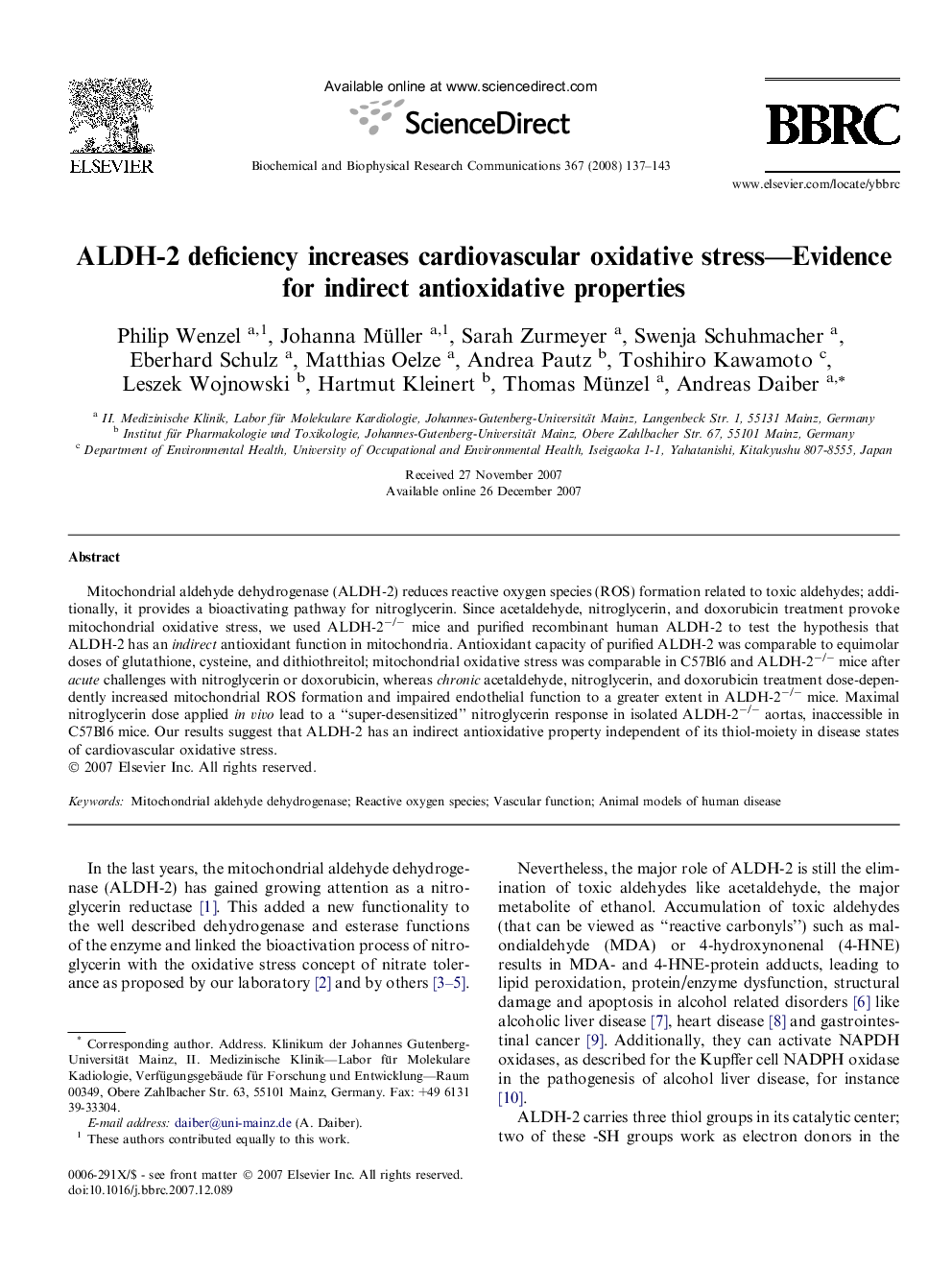| Article ID | Journal | Published Year | Pages | File Type |
|---|---|---|---|---|
| 1936304 | Biochemical and Biophysical Research Communications | 2008 | 7 Pages |
Mitochondrial aldehyde dehydrogenase (ALDH-2) reduces reactive oxygen species (ROS) formation related to toxic aldehydes; additionally, it provides a bioactivating pathway for nitroglycerin. Since acetaldehyde, nitroglycerin, and doxorubicin treatment provoke mitochondrial oxidative stress, we used ALDH-2−/− mice and purified recombinant human ALDH-2 to test the hypothesis that ALDH-2 has an indirect antioxidant function in mitochondria. Antioxidant capacity of purified ALDH-2 was comparable to equimolar doses of glutathione, cysteine, and dithiothreitol; mitochondrial oxidative stress was comparable in C57Bl6 and ALDH-2−/− mice after acute challenges with nitroglycerin or doxorubicin, whereas chronic acetaldehyde, nitroglycerin, and doxorubicin treatment dose-dependently increased mitochondrial ROS formation and impaired endothelial function to a greater extent in ALDH-2−/− mice. Maximal nitroglycerin dose applied in vivo lead to a “super-desensitized” nitroglycerin response in isolated ALDH-2−/− aortas, inaccessible in C57Bl6 mice. Our results suggest that ALDH-2 has an indirect antioxidative property independent of its thiol-moiety in disease states of cardiovascular oxidative stress.
